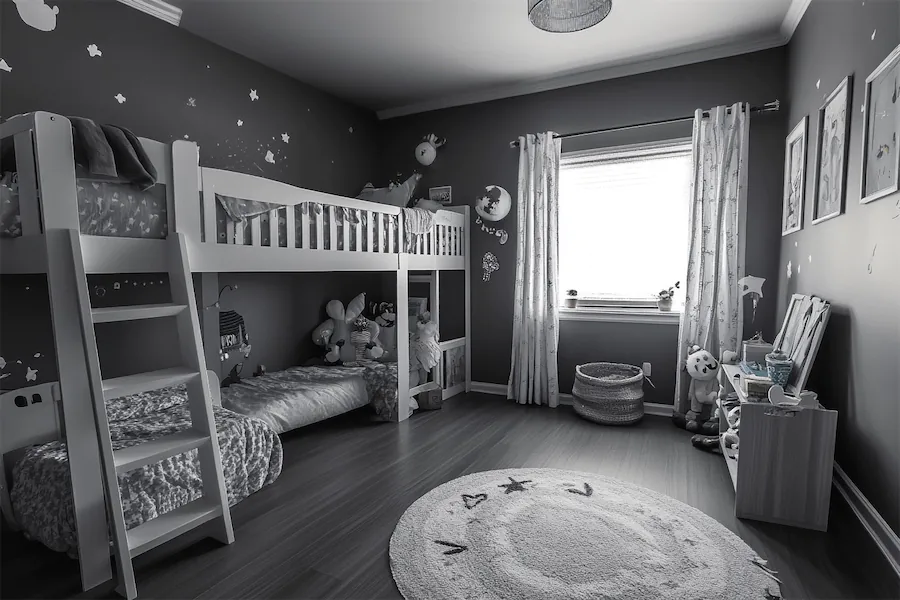Designing a grayscale-themed room for your child can create a sophisticated and versatile environment that adapts as they grow. Utilizing shades of gray, from soft silvers to deep charcoals, provides a neutral backdrop that allows for flexibility in decor and personalization.
History and Origins of Grayscale Decor
Grayscale, encompassing the spectrum between black and white, has long been a staple in interior design due to its timeless appeal and adaptability. In children’s rooms, grayscale offers a modern alternative to traditional, more colorful palettes, enabling a space that can evolve with the child’s changing tastes.
Key Features of a Grayscale Kid’s Room
- Neutral Foundation: Gray serves as a perfect base color, allowing for easy integration of various accent colors and themes over time. This neutrality ensures the room remains cohesive, even as other elements change.
- Sophistication: A grayscale palette introduces an element of elegance, making the room feel polished and well-designed. This sophisticated backdrop can be enhanced with textures and patterns to add depth and interest.
- Gender Neutrality: Gray is inherently gender-neutral, making it an excellent choice for shared spaces or for parents who prefer to avoid traditional color associations. This neutrality allows for greater flexibility in decorating and personalizing the space.
Applications of Grayscale Decor in Children’s Rooms
- Walls: Painting walls in varying shades of gray can create depth and interest. Lighter grays can make a room feel more spacious, while darker tones add coziness. Incorporating patterns, such as stripes or geometric designs, can further enhance the visual appeal.
- Furniture: Selecting furniture in gray tones ensures longevity in style and can be easily accented with colorful cushions or throws. Materials like metal, wood, and upholstered pieces in gray can add texture and warmth to the room.
- Textiles and Accessories: Incorporate gray bedding, rugs, and curtains to maintain the theme. Adding textures like knits or faux fur can prevent the room from feeling too monochromatic. Introducing patterns, such as polka dots or chevrons, can add a playful touch.
Considerations When Designing a Grayscale Kid’s Room
- Balance: To prevent the room from feeling too stark or cold, balance gray tones with warmer elements, such as wooden furniture or colorful accessories. This combination adds warmth and makes the space more inviting.
- Lighting: Ensure the room has ample natural and artificial light to keep the space bright and welcoming. Gray can sometimes absorb light, so incorporating mirrors and light-colored furnishings can help reflect light and enhance brightness.
- Personalization: Encourage your child to add personal touches, such as artwork or toys, to infuse their personality into the space. This personalization makes the room feel uniquely theirs and can easily be updated as their interests change.
Conclusion
A grayscale-themed kid’s room offers a timeless and adaptable canvas that can grow with your child. By thoughtfully incorporating various shades of gray and balancing them with textures, patterns, and personal elements, you can create a space that is both stylish and functional.
